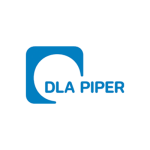The Paris climate agreement and increased public awareness has encouraged businesses and countries to increase their investments in the production of renewable energy.
Like many other countries, the Dutch government provides significant subsidies and fiscal incentives for these types of investments. One of the latest developments is the use of the roofs of warehouses and distribution centres. Warehouses and distribution centres generally consume large amounts of energy and most warehouses have large flat shadow free roofs which give an excellent basis for solar power.
This article focuses on solar power through the installation of solar panels located on the roof of a property. Although the investment in these structures seems simple from the outset, the structuring is key to become eligible for the subsidy and to mitigate energy tax exposure. This article provides an overview of the Dutch sustainable energy subsidy (SDE++) and energy tax implications of the various investing structures of solar panels.
SDE++ subsidy
The Dutch government introduced the SDE++ subsidy scheme in the fall of 2020 which replaced the original SDE (started in 2008) and SDE+ (started in 2013) subsidy schemes. SDE++ is an exploitation subsidy provided to any business using installations for the production of renewable energy and the reduction of emission levels.
These are the two primary goals of the SDE++ regulation. The SDE++ subsidy can be requested for all forms of renewable energy production (e.g. solar panels, wind farms biomass ) and aims to reduce the difference in cost price between grey and green energy.
A business must qualify as a producer of solar energy to qualify for SDE++ subsidy with respect to solar panels. This implies that the owner/lessor needs to ‘maintain’ the solar panels. The owner of the solar panel installation is in principle considered to maintain the solar panels. However, this may be different if the owner is not operating the solar panels but instead leases the solar panels to a third party. In such a scenario, the competent authorities may question whether the owner can still qualify as a producer under the SDE++ subsidy.
Energy tax
Any supply of energy to the end-user and the usage of energy in the Netherlands is generally subject to Dutch energy tax. This implies that the owner of solar panels which supplies energy generated with the solar panels to its tenant would be required to register for energy tax purposes.
Energy tax is usually only due when being supplied to the end-user. An exemption applies for the so-called ‘own use’ of the energy. A business may be able to apply for this exemption when it generates solar energy (e.g. through the solar panels on its roof) and uses this for its own purposes. If so, no energy tax would be due.
Legal structuring of solar panel investments
As the installation of solar panels in unbuilt or greenfield areas of the Netherlands receives increased public scrutiny, the Dutch government is under pressure to install more solar panels on the roof of public and private properties in the Netherlands.
In practice, there are many ways to structure the use of solar power on existing buildings, all of which trigger different commercial, legal, regulatory and tax implications for both owners/lessors and tenants/users. The legal structuring also has a significant impact on the eligibility for Dutch SDE++ subsidy and levy of energy tax. The three common structures are discussed below.
Exploitation of solar panels – supply of energy to tenant
The owner of immovable property installs solar panels on the roof of its immovable property and supplies the solar energy to the tenant. The owner of the solar panel is the person maintaining the solar panels and therefore eligible for SDE++ subsidy. The downside of this structure is that the supply of solar energy to the tenant is generally subject to energy tax. Consequently, the owner of the solar panels would generally be required to register for energy tax purposes.
Lease of solar panels to tenant
In this structure, the owner of the immovable property owns the solar panels but leases these solar panels as part of a financial or operational lease agreement to the tenant. To apply for the own use energy tax exemption, the energy needs to be generated for the risk and account of the user.
Based on guidance of the Dutch tax authorities, as long as the owner/lessor charges a fixed fee for the lease of the solar panels, the risk and account of generating the solar energy lays with the lessee. At the same time, it is questionable whether the owner/lessor would still qualify as the producer for SDE++ purposes and therefore be eligible for SDE++ subsidy.
In practice, these kinds of leasing structures are often discussed upfront with the Dutch tax authorities and the RVO (the authority issuing SDE++'s). Depending on the exact terms of the lease agreement, parties may be able to profit from both the energy tax exemption and the SDE subsidy.
Owner leases the rooftop to a solar energy operation
If the owner of the immovable property is not interested in owning the solar panels, it is also possible to lease the roof of the immovable property to a solar energy operator. On its turn, the solar energy operator may lease the solar panels to the tenant or supplies energy to the tenant. Generally, the solar energy operator wants to acquire a right of superficies to make sure it remains the legal owner of the solar panels. In this case, similar discussions for the SDE++ subsidy and energy tax arise between the solar panel operator and the tenant.
Key takeaways
There has been a significant increase in solar panels investments on the rooftop of buildings in the Netherlands. The challenge is to structure in such a way that parties can benefit both from the SDE++ subsidy and energy tax exemption.
Depending on the legal arrangements between the lessor/lessee and solar operator/lessee, discussing the impact for SDE++ subsidy and energy tax exemption upfront with the respective authorities is recommended.
Sebastiaan Wijsman
Legal director, DLA Piper
E: sebastiaan.wijsman@dlapiper.com
Jesse Peeters
Tax advisor, DLA Piper













